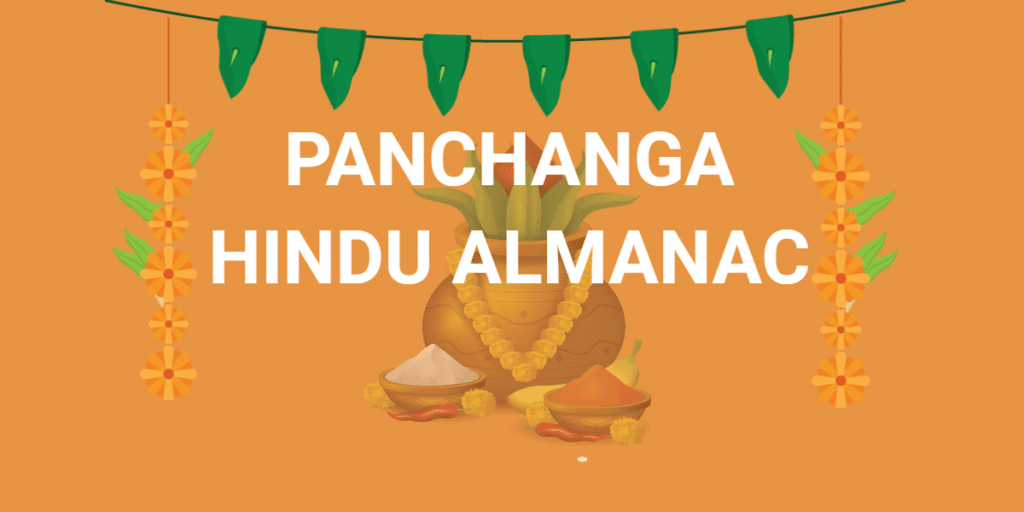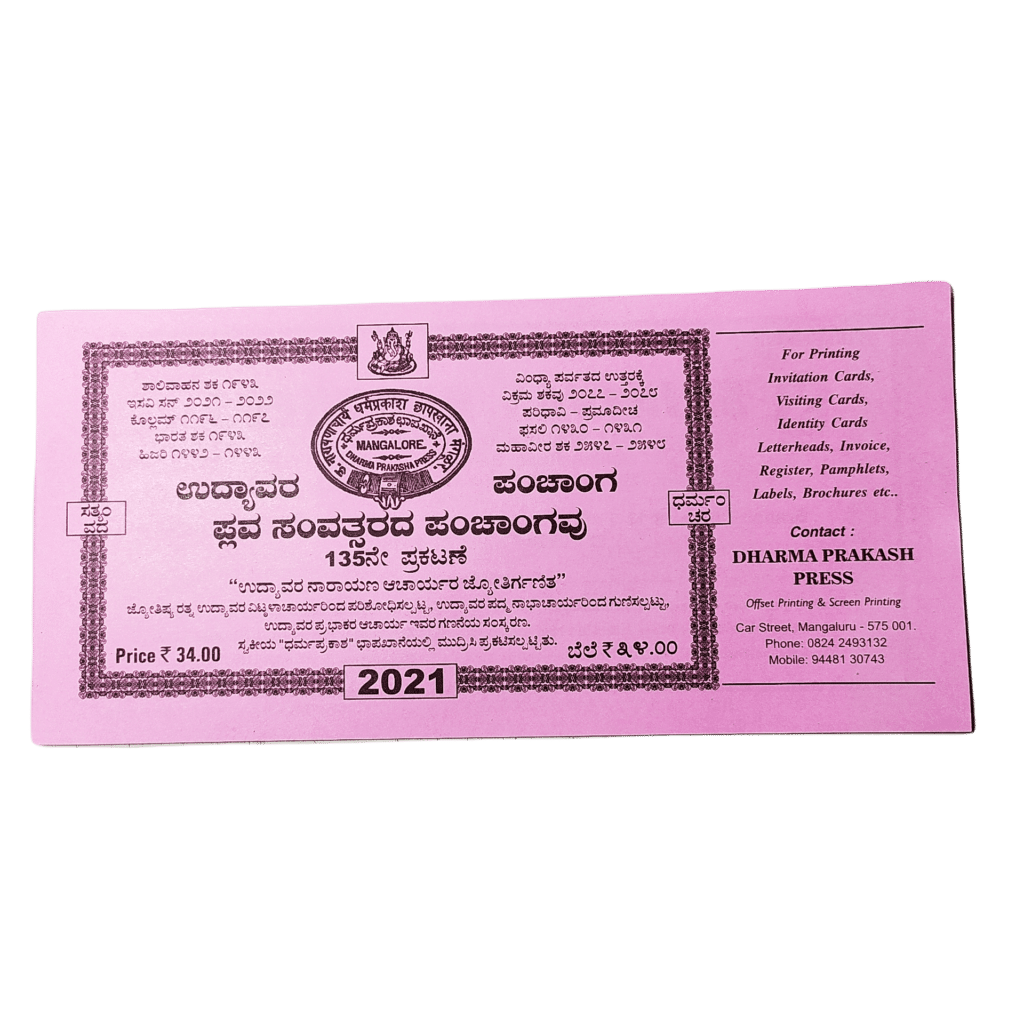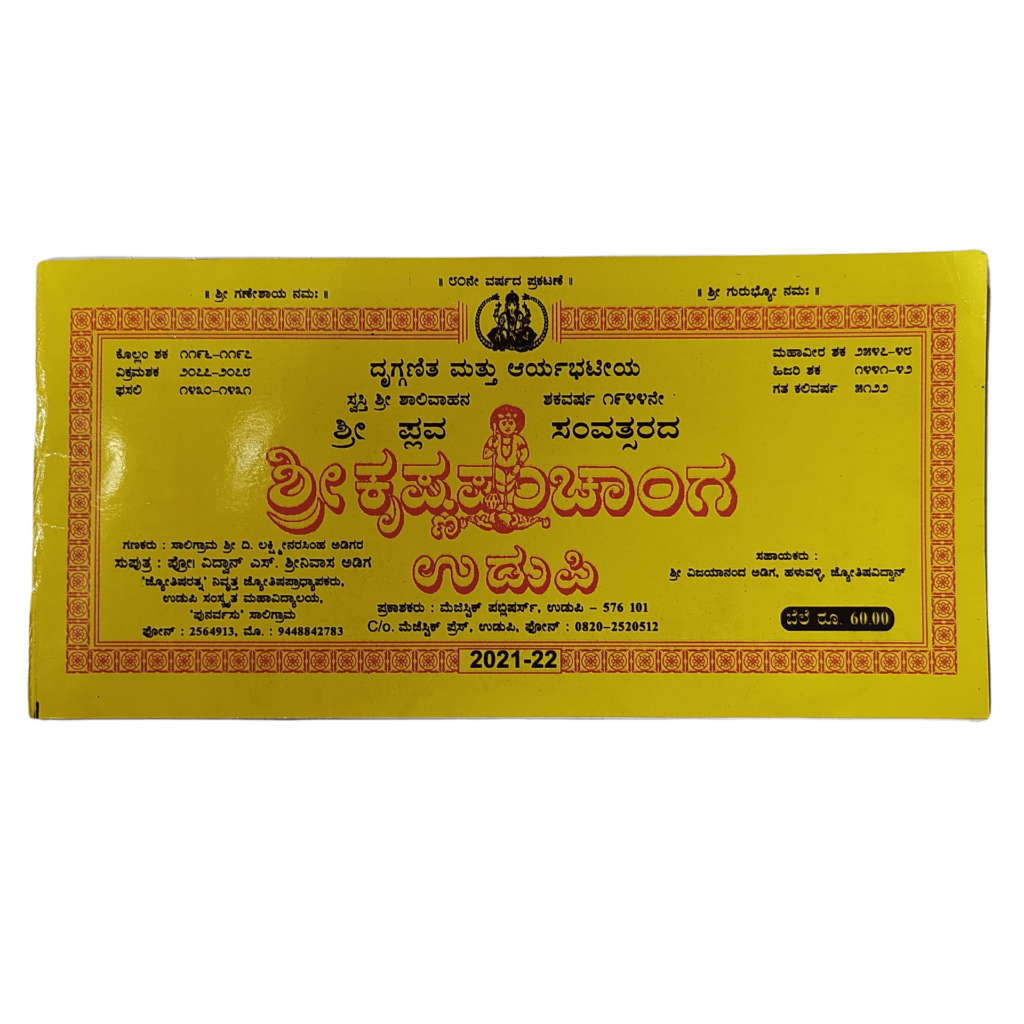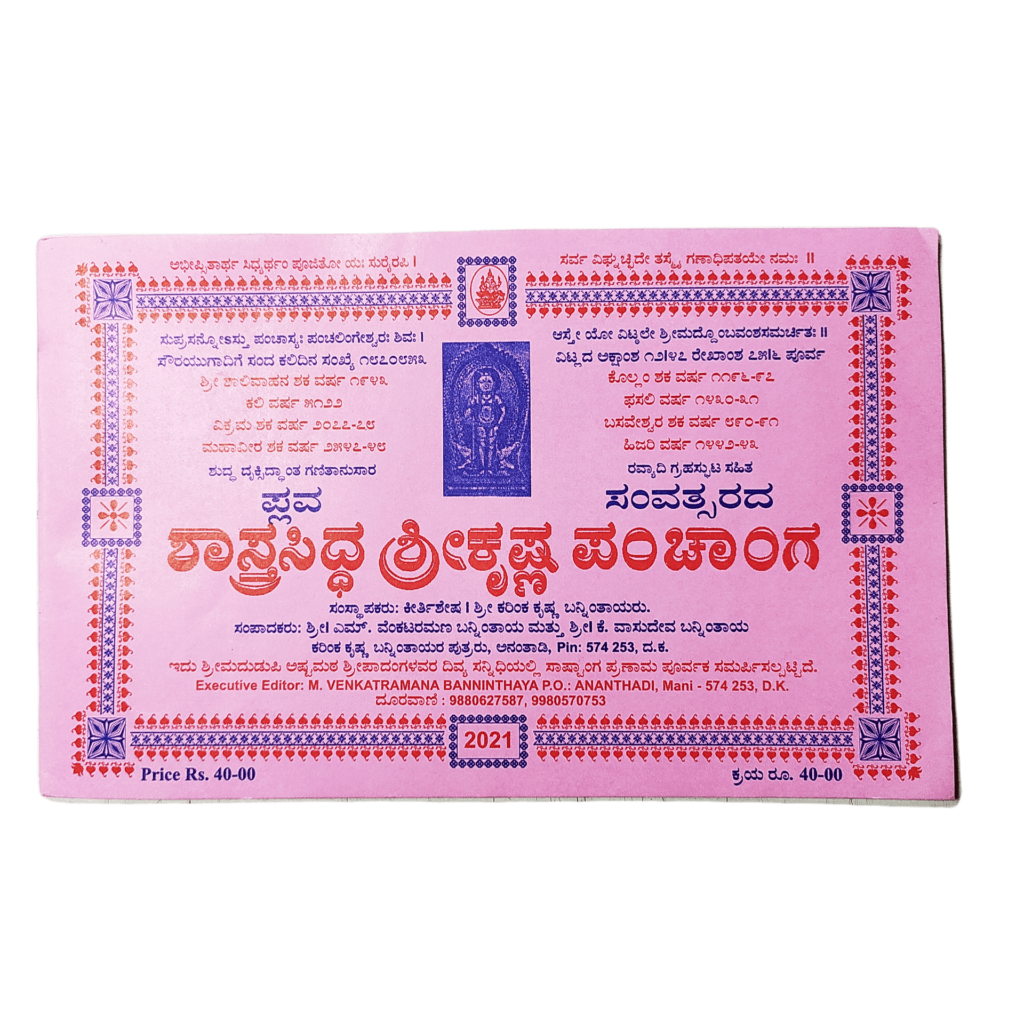
Panchanga is a Hindu calendar and almanac, which follows traditional units of Hindu timekeeping, and presents important dates and their calculations in a tabulated form. A panchanga gives detailed information on solar and lunar eclipses; it lists the position of the planets and stars relative to the earth along with their positions at the time of birth. It also provides information about weather forecasts as well as more mundane occurrences.
Aside from being a convenient way to navigate and refer to dates, the panchanga contains interesting information. These are important from an astrological point of view and are used to calculate events in Indian calendars such as festivals like Holi, Vasant Panchami, Maha Shivaratri, Raksha Bandhan, etc. Other important traditional observances such as Navratri, Uttarayana, Utsav/Utasav, etc., are also calculated using the information in panchanga.
Panchangas also provide details of celestial occurrences like the Lunar and Solar eclipse, dates on the movement of planets like Jupiter and Saturn from one constellation to another.
The panchanga is published once a year. In Hindu tradition, the year is called a Samvatsara and starts on Ugadi day. Before the advent of the standardized English calendar, Indian astrologers followed the path of the planets Jupiter and Saturn, the Sun, and the Moon to determine the start of the year.
According to the calculations, Jupiter takes 361 days (approximately 1 year) to transition from one constellation to the next. Whereas Saturn takes approximately 2.5 years to transition from the current star sign to the next. So it takes 12 years for Jupiter to move from one constellation to another and reach the starting point, the Aires constellation. Saturn takes 30 years to make one circle around the sun. Both, Jupiter and Saturn together take 60 years to circle and align at the starting point of the Aires constellation. Hence there are 60 samvatsaras mentioned in the historic Indian calendars.
The samvatsaras are not numbered but each has been given a name. Once all 60 samvatsaras are over, the cycle starts over again. They are divided into 3 groups of 20 Samvatsaras each. The first 20 from Prabhava to Vyaya are assigned to Brahma. The next 20 from Sarvajit to Parabhava to Vishnu and the last 20 to Shiva.
The current samvatsara is called Krodhi and upcoming one starting on the Ugadi day of 2025 is known as “Vishwavasu”.
Many panchangas are popular in India. South Indians, especially from the coastal Karnataka region use the following panchangas.
Udyavara Panchanga
Shri Krishna Panchanga Udupi
Shastrasiddha Shri Krishna Panchanga
Every day of the week has a special significance in Hinduism. They are much more than just the numbers that define dates and times in a calendar!




